Discomfort: Experiments in Furniture, Function and Form
By Ruth Borgenicht
Discomfort: Experiments in Furniture, Function and Form
Jan. 17 – May 8, 2016
Hunterdon Art Museum, Clinton NJ
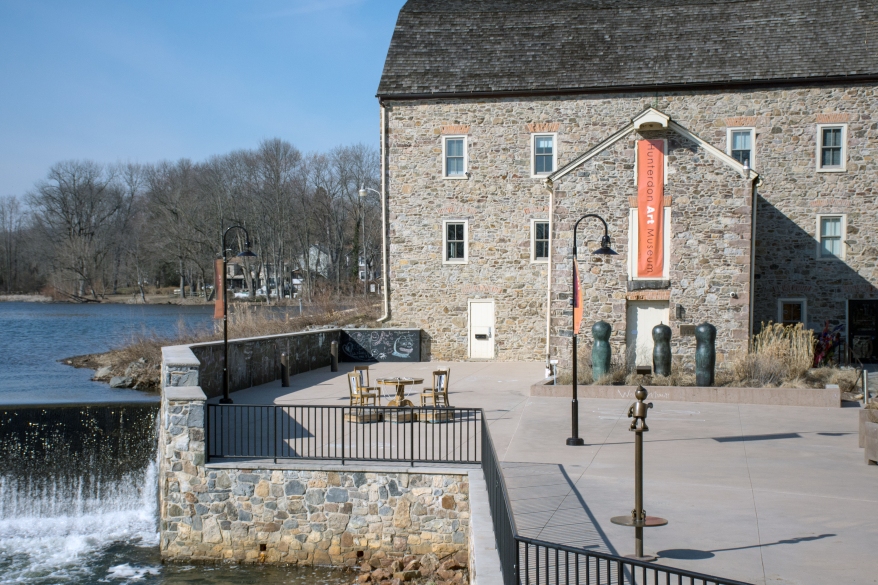
Hunterdon Art Museum is housed in a historic mill along the
South Branch of the Raritan River
What do a floating sculpture, a police barricade and a mid-century credenza have in common? They are all part of Hunterdon Art Museum’s exhibition “Experiments in Furniture, Function and Form” on view now until May 8th. The pieces in the exhibition cross boundaries of utility and sculpture and alter what is familiar and commonplace. Curator Liz K. Sheehan’s states “There is a lot of ‘why?’ in this show.”; which I can personally attest to, as the works prompted me to ask the very same question of both the artists and the curator.
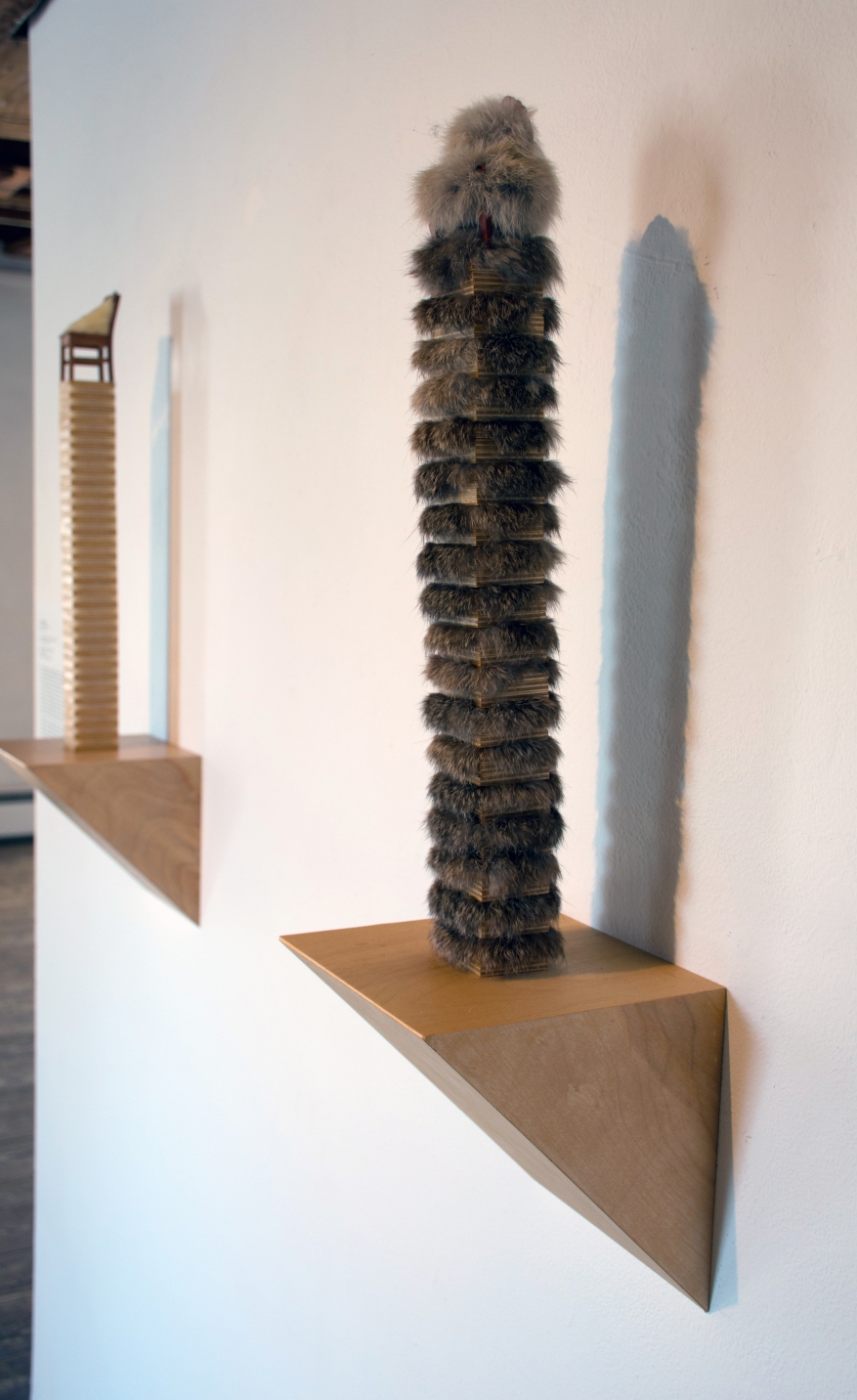
Celester Roberge, Fur Covered Chair for Meret Oppenheim(foreground),
Wax Chair for Beuys (background)
More than half of the dozen artists in the show had a single piece on display. Initially the show appeared to be a collection of art experiments, one-offs, that were painted, wrapped, photographed, carved, assembled, sculpted, cast and worn. In order to get a sense of the artists’ individual practices, one can refer to a large binder of information filled with websites, articles and resumes. Some of their work centered around furniture, while others used furniture when the particular needs of a project dictated it. Celeste Roberge, falls into the former camp. She is represented by three carefully crafted chair sculptures which reference three iconic artists in style and/or materials. Her “Fur Covered Chair for Meret Oppenheim” is tall and thin; 14” high by about 2” square and comprised of alternating stacked plywood and fur. Stripped of a surrealist history and the visceral quality of Oppenheim’s fur-lined teacup, the chair sculpture is little more than a curious object.
Roberge’s “Wax Chair for Beuys” is similarly proportioned and made of wood and beeswax. The third chair, “Stainless Steel Stack for Judd” is 4 times higher but still only a couple of inches square. Its tall vertical grid of steel forms a very high base for a miniature chair on top. These two chairs for Beuys and Judd, like the Oppenheim, were expertly crafted and were similarly curious with little impact.
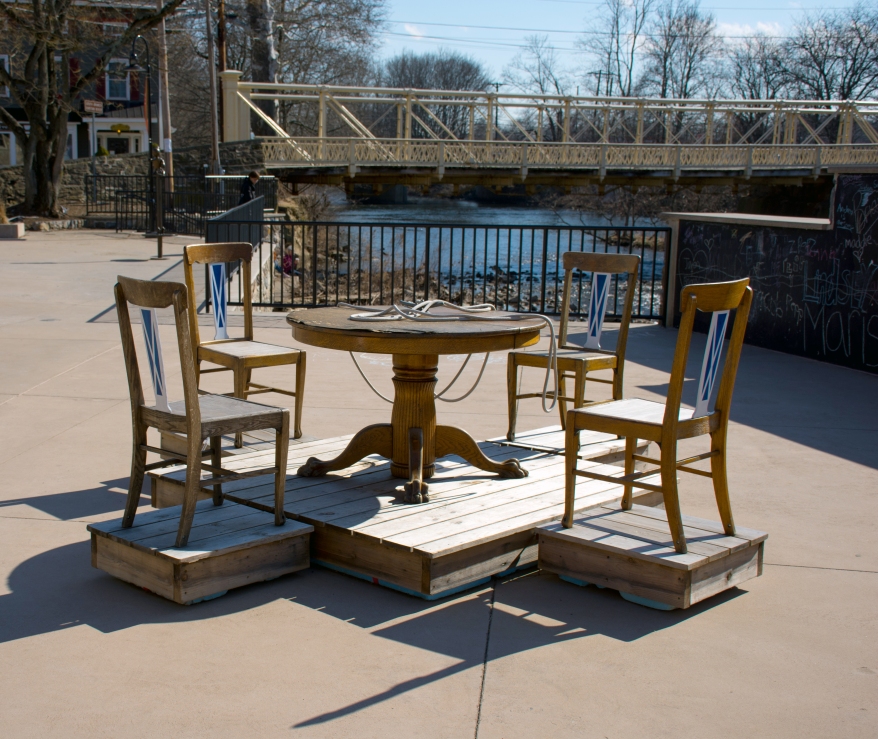
ADAM J. MANLEY: Staying Put, Found dining set, wood, marine foam, hardware
(outside on patio)
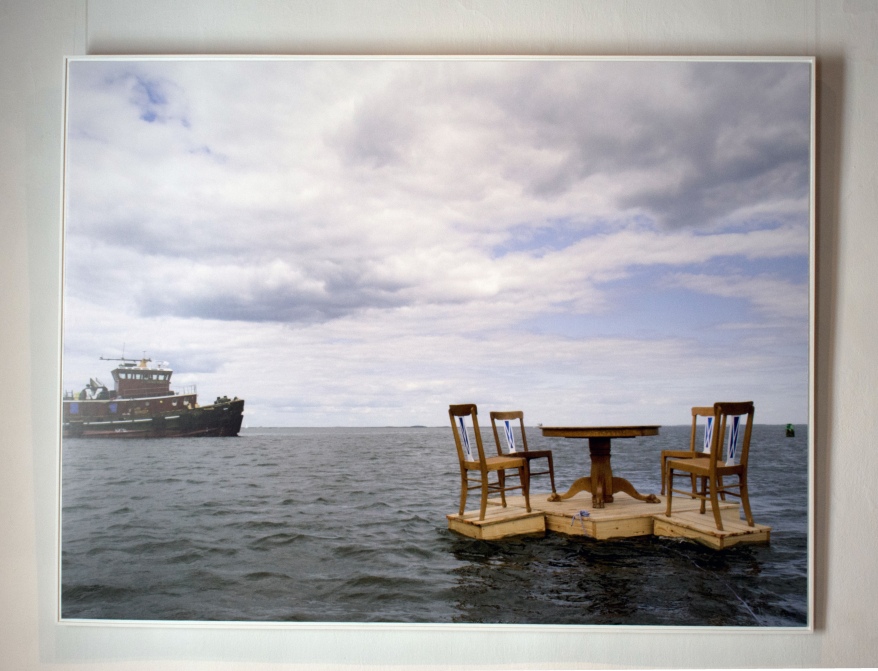
ADAM J. MANLEY: Staying Put (Rockland Light), digital print
Outside the museum on a concrete patio overlooking the South Branch of the Raritan River, Adam J. Manley’s sculpture Staying Put consists of a round table with 4 equally distributed chairs mounted on a wooden platform. Though trained in furniture making, Manley’s practice combines found and constructed work, that don’t always utilize furniture. From the photographs in the exhibition documenting his piece floating on three different bodies of water, one can ascertain that his sculpture is buoyant. These images are mounted beside a window which perfectly frames the concrete patio and the river below. Ideally, the sculpture would have been anchored out in the river but this was not possible, according to a museum trustee that happened to be there the day I went. Pity.
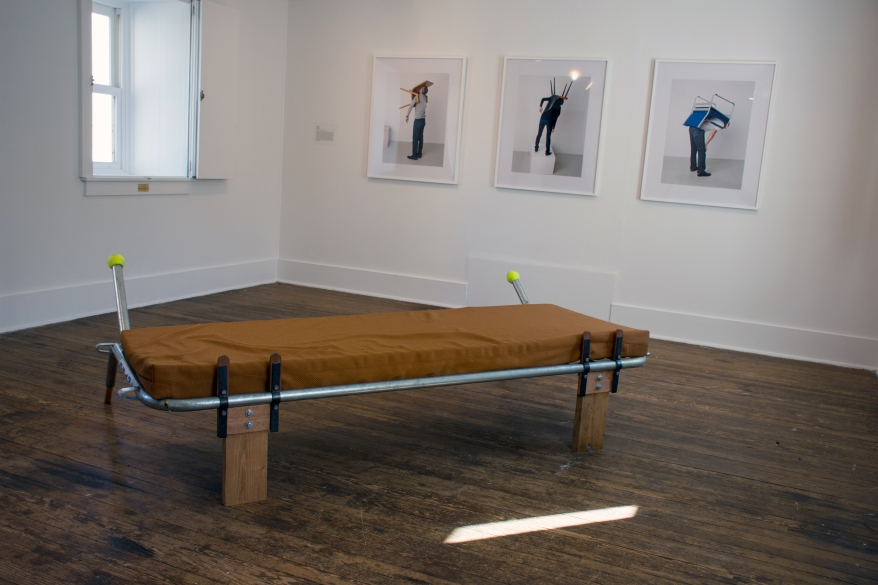
Caroline Woolard Barricade to Bed (foreground)
Irwin Wurm, One Minute Sculpture (background)
The lengthy wall texts are helpful in explaining the artists’ vision as it is not always apparent by looking at the work alone. For example, Caroline Woolard’s “Barricade to Bed” consists of a police barricade laid on its side. This creates a slatted platform for a mattress with tennis balls covering the barricade’s feet. The piece was part of “The Exchange Cafe” at MOMA, a social space that was part of the museum’s education and research department that encouraged visitors to participate in the functioning cafe in exchange for resource based currency, rather than money. The piece was inspired by the Occupy Wall Street Movement and was disseminated in the form of an open access toolkit. By only exhibiting the barricade, without the toolkit or participatory component, as originally presented, it seemed stripped of its agency.
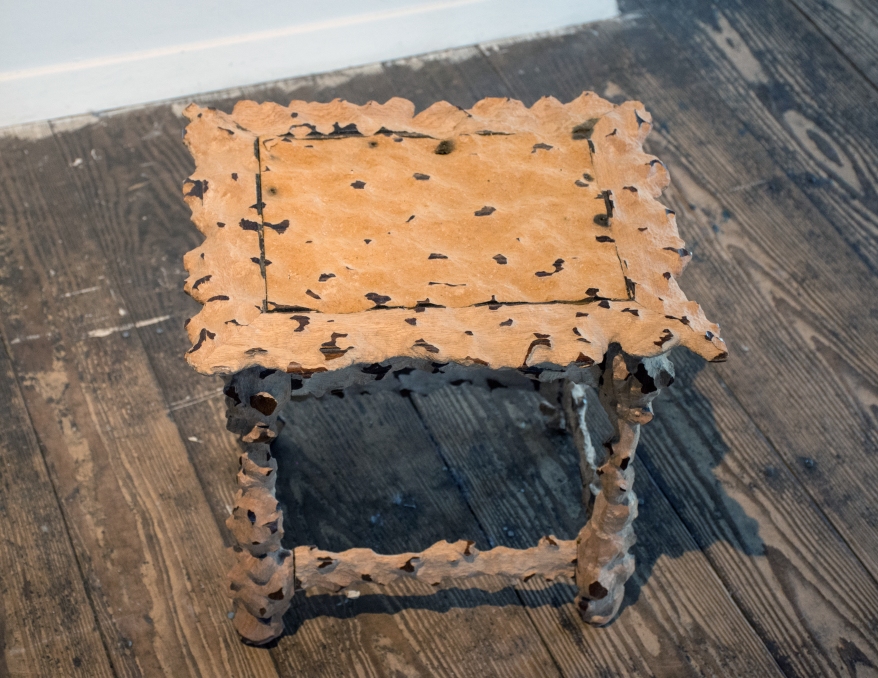
JILL SLOSBURG-ACKERMAN: Edward Snowden, Altered discarded table
An example where the wall text’s explanation did much to explain the intent of the artist, but did little to animate the work, is Jill Slosburg-Ackerman’s found side table titled “Edward Snowden.” Its surfaces are completely carved into undulating landscapes. The wall text states the artist found the cheap side table discarded on the street, an “aspirational object.” The artist connected the process of whittling through the cheap dark veneer, exposing its particle board construction, to the uncovering of secrets; and the abraded surface, a reflection of the collective anxiety over national and personal security. The piece was more interesting before reading all that.
A side room contained the most engaging and interactive pieces in the show. This included Irwin Wurm’s 3 photographs documenting three different physical interactions with a chair, none of which included sitting. The series is part of his “One Minute Sculptures” which documents people engaging with everyday objects in spontaneous and unexpected ways. Upon leaving the exhibit, the bench along the building’s stairwell suddenly held all kinds of potential beyond its usual function.

MATTHIAS PLIESSNIG and MALCOLM BRAY installation view
A dozen artists in the space fulfilled the curatorial statement, however if the amount of artists were cut in half, each one could have shown a greater breadth of work. Thus, the informative wall texts could contextualize a grouping of works rather than imbue a single piece with a broad conceptual significance. The show seemed more concerned with exhibiting a variety of ways that artists use furniture, and was quite successful at that, but it came at the expense of a deeper examination of an artist’s practice and of furniture’s sculptural and conceptual potential.
